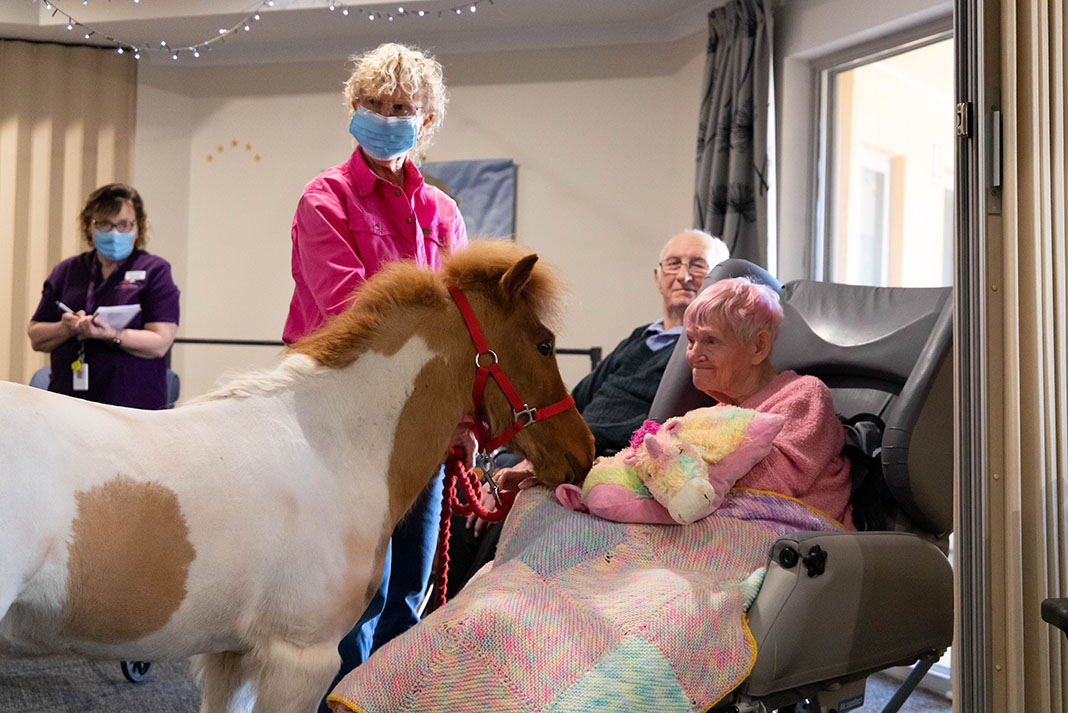A pat a day keeps the doctor at bay: The benefits of animal therapy
Animal-assisted therapy, also known as ‘pet therapy’, facilitates guided animal interaction with an individual or group with the aim of improving physical and mental health.
Research has demonstrated that animal interaction has a range of benefits for all people, particularly the elderly, including:
– reduced stress, agitation and tension
– lowered blood pressure
– improved social interaction
– improved communication
Fifteen minutes with an animal is all it takes to increase brain activity and serotonin, known as the ‘feel good hormone’, in older people.
Animals are a regular and important feature within Barossa Village’s residential lifestyle program.
“We have a range of different animals that come into the Residency as part of our animal therapy programming, from the expected dogs and cats, to the more unexpected like ponies and lambs,” explains Lifestyle Manager Lisa Ognjanovic.

“On the days we have animal visitors there is definitely a buzz in the air, we can really see the joy it brings our residents.”
- Lisa Ognjanovic

Studies within aged care residential facilities have shown residents involved in animal therapy are more resilient, tend to recover more quickly from illness or surgery and have improved baseline depression scores. Animal interaction has also been successful in re-engaging residents who may be disinterested and disengaged in other activities, providing comfort and connection.
“On the days we have animal visitors there is definitely a buzz in the air, we can really see the joy it brings our residents,” Lisa enthuses.
Animal interaction is of particular benefit to older people living with Dementia or Alzheimer’s. A German study (source: feroscare.com.au) involving dogs visiting 17 nursing homes across the country found that residents with Dementia that participated in the animal therapy sessions had improved verbal communication and increased attention.
Animal therapy can also assist in rekindling memories, particularly as animals and pets have been a significant part of many people’s lives.
“The animal visits can really spark conversations between residents as well as with care staff and you can learn a lot more about a resident’s life and interests through these conversations,” says Lisa.
“The animals are generally happy to be patted and doted upon, which allow residents who perhaps don’t get many visitors the freedom to express physical affection, which can be a real boost to their self-esteem and mood.”
retirement living | In-home care
supported accomodation | residential care
Contact Us
Barossa Village is not for profit, community owned,
aged care provider, since 1964
Find us on map
Contact Information
Call us directly
Address
14 Scholz Avenue, Nuriootpa SA 5355



